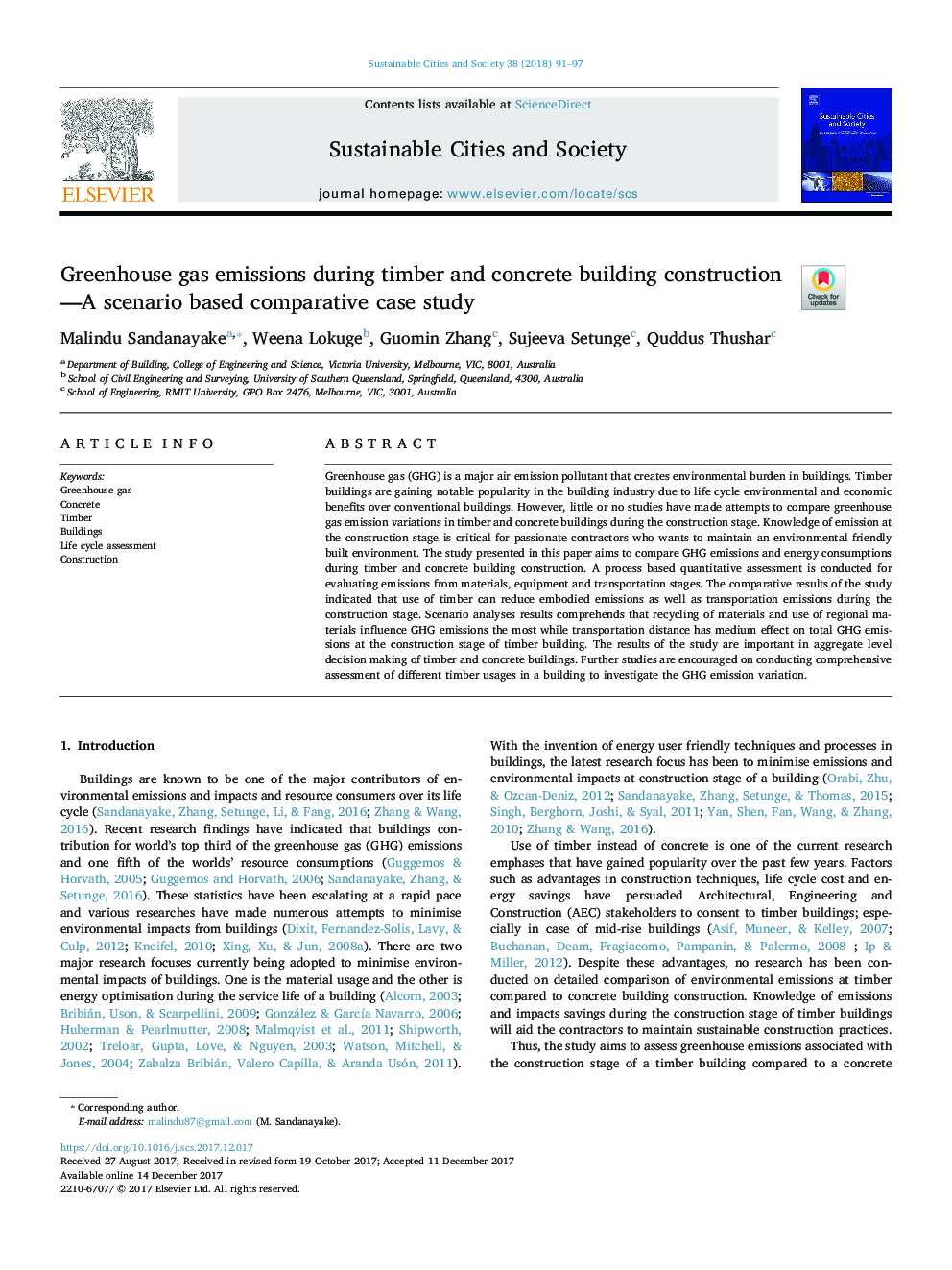| Article ID | Journal | Published Year | Pages | File Type |
|---|---|---|---|---|
| 6775298 | Sustainable Cities and Society | 2018 | 7 Pages |
Abstract
Greenhouse gas (GHG) is a major air emission pollutant that creates environmental burden in buildings. Timber buildings are gaining notable popularity in the building industry due to life cycle environmental and economic benefits over conventional buildings. However, little or no studies have made attempts to compare greenhouse gas emission variations in timber and concrete buildings during the construction stage. Knowledge of emission at the construction stage is critical for passionate contractors who wants to maintain an environmental friendly built environment. The study presented in this paper aims to compare GHG emissions and energy consumptions during timber and concrete building construction. A process based quantitative assessment is conducted for evaluating emissions from materials, equipment and transportation stages. The comparative results of the study indicated that use of timber can reduce embodied emissions as well as transportation emissions during the construction stage. Scenario analyses results comprehends that recycling of materials and use of regional materials influence GHG emissions the most while transportation distance has medium effect on total GHG emissions at the construction stage of timber building. The results of the study are important in aggregate level decision making of timber and concrete buildings. Further studies are encouraged on conducting comprehensive assessment of different timber usages in a building to investigate the GHG emission variation.
Related Topics
Physical Sciences and Engineering
Energy
Renewable Energy, Sustainability and the Environment
Authors
Malindu Sandanayake, Weena Lokuge, Guomin Zhang, Sujeeva Setunge, Quddus Thushar,
